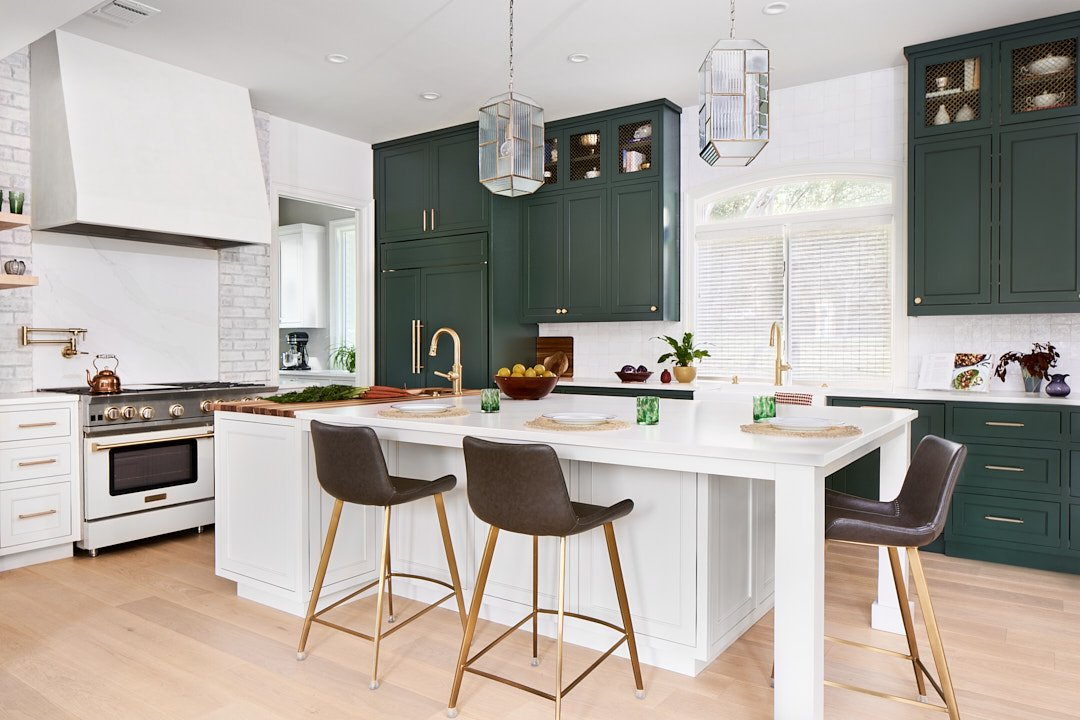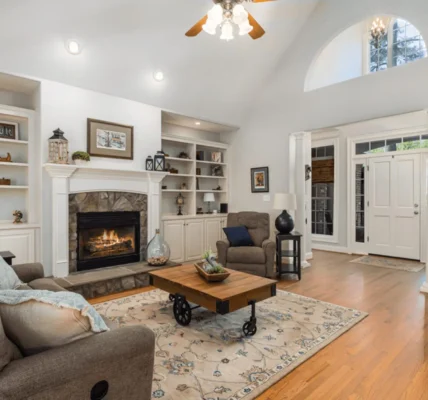Range hoods not only enhance the visual appeal of a kitchen but also serve the essential purpose of ventilating smoke and odors out of the home. However, determining the most suitable type of range hood for your kitchen depends on factors such as layout, functionality, and aesthetics. Our team of architects in Austin has categorized the top seven range hood styles to assist you in making an informed decision Additionally, we disclose the one type of range hood we would never incorporate into a project!
Vented vs. Non-vented Range Hoods
Before delving into the various styles of range hoods, let’s differentiate between vented and non-vented hoods.
Vented Range Hoods
Vented range hoods, also known as ducted or external venting hoods, expel air to the outside through a duct system, effectively removing smoke and odors from the kitchen.
Non-vented Range Hoods
Non-vented range hoods, also called ductless or recirculating hoods, draw air through a filter and recirculate it back into the kitchen. Although the filter captures some smoke and odor, this method is less efficient than venting air outside.
It is advisable to opt for vented hoods over non-vented ones, as they are more effective in managing smoke and odors. Ensure to plan your design accordingly to accommodate a vented hood, especially during renovations of older homes with potential architectural constraints.
7 Types of Range Hoods for Your Kitchen
Here are the seven most popular styles of range hoods and their features.
1. Wall-Mounted Range Hood
Wall-mounted range hoods stand as a top choice among homeowners, featuring a bell-shaped canopy and sometimes incorporating a chimney-style stack for added flair. They are directly affixed to the wall above the stove, available in various finishes, with stainless steel being particularly popular. Notably, they eliminate space for upper cabinets over the stovetop.
2. Under-Cabinet Range Hood
Under-cabinet range hoods are compact and discreet, fitting snugly beneath an over-the-stove cabinet for enhanced storage and a streamlined appearance.
3. Island Range Hood
Designed specifically for kitchen islands, island range hoods resemble wall mount hoods but are finished on all sides to hang in the center of the room. While they can serve as a focal point, their size and height may obscure sightlines, requiring careful consideration during the design phase.
4. Retractable Downdraft
Retractable downdrafts, unlike traditional range hoods positioned over the stovetop, are discreetly integrated into the countertop. Remaining flush with the counters when not in use, downdraft vents seamlessly blend into the kitchen’s design. With a simple push of a button, they ascend approximately 14 inches behind the cooktop, effectively venting smoke and odors through ducts beneath the floor. Particularly suitable for island ranges, retractable downdrafts preserve sightlines while providing ventilation. However, it’s worth noting that while sleek, they may be less efficient compared to traditional range hoods. Given adequate space, an over-the-stove hood remains the preferred choice for optimal ventilation.
5. Slide-Out Range Hood
Slide-out range hoods mount seamlessly under cabinets and retract from view when not in use, offering a discreet option for homeowners who prefer a minimalist aesthetic.
6. Custom Range Hood
While the range hoods we’ve discussed thus far are readily available from major brands to complement your appliance package, some homeowners crave a bespoke design to serve as a standout focal point, particularly in open-concept kitchens. This is where custom range hoods come into play! Collaborating with your architect allows for the creation of any imaginable hood design. Popular profiles include bell, barrel, and box shapes, with materials ranging from wood and metal to plaster and stone. It’s advisable to plan ahead with your architect to develop the design, typically opting to make the range hood slightly wider than the stovetop for added impact. Once the custom design is finalized, select a range hood insert that aligns with your specifications.
7. Range Alcove
Range alcoves feature two walls extending up to a drop-down containing the vent hood insert, often adorned with architectural details such as arches or beams. This design not only creates a striking focal point but also integrates storage shelves for added functionality.
How to Choose the Right Range Hood for Your Kitchen
Numerous stunning range hood options are available on the market. To aid in narrowing down your decision, consider the following factors:
Range Placement
The placement of your range significantly impacts the range hood options suitable for your kitchen design. For instance, cooktops situated in islands or in front of windows may pose challenges for traditional hoods, making retractable downdrafts the optimal choice in such scenarios.
Type of Range
Interestingly, not all stovetops necessitate a range hood. While gas ranges typically require ventilation according to building codes, electric or induction cooktops often do not. Despite this, many homeowners still opt for range hoods for both their aesthetic appeal and functionality.
Overall Style
Range hoods come in various styles that complement different architectural designs. For instance, a custom plaster hood exudes a traditional or Mediterranean-inspired ambiance, whereas a stainless-steel hood lends a more contemporary or industrial feel. It’s essential to consider the overall style of your home when selecting a range hood.
The Range Hood Style We’d Never Use
The range hood style we steer clear of at all costs? The microwave hood combination! While it offers a two-for-one convenience, it often falls short in terms of function and fails to create an attractive kitchen focal point. Our recommendation? Conceal the microwave in a butler’s pantry and opt for a stunning custom hood design to elevate the kitchen’s aesthetic appeal.




